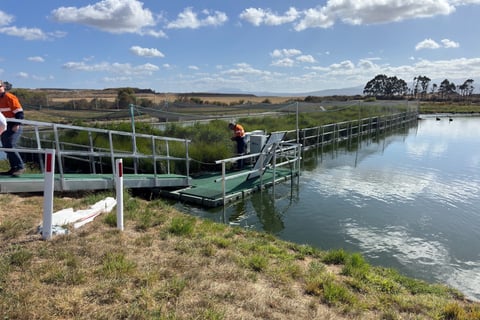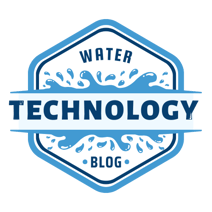Harnessing Aquatic Plants for Nutrient Removal in Wastewater Treatment
As the global demand for clean water grows, innovative and sustainable solutions for wastewater treatment are more critical than ever. One promising approach is using aquatic plants to remove excess nutrients, such as nitrogen and phosphorus, from wastewater. This eco-friendly method, often integrated into constructed wetlands or floating treatment systems, leverages the natural abilities of plants to improve water quality while minimizing environmental impact.
WASTEWATERENVIRONMENTAL TECH
5/27/20254 min read
Excess nutrients in wastewater, particularly nitrogen and phosphorus, can lead to severe environmental issues. When discharged into natural water bodies, these nutrients fuel eutrophication, causing algal blooms, oxygen depletion, and harm to aquatic ecosystems. Traditional wastewater treatment methods, like chemical precipitation or mechanical filtration, can be energy-intensive and costly. Aquatic plants offer a sustainable alternative by naturally absorbing and transforming these nutrients, reducing pollution while supporting biodiversity.
How Aquatic Plants Remove Nutrients
Aquatic plants remove nutrients through several mechanisms:
Uptake and Assimilation: Plants absorb nitrogen and phosphorus through their roots and shoots, using them for growth. These nutrients are stored in plant tissues, effectively removing them from the water.
Microbial Activity: The root zones of aquatic plants, known as the rhizosphere, host beneficial microbes that break down organic matter and convert nitrogen compounds into less harmful forms (e.g., through nitrification and denitrification).
Sediment Trapping: Plants slow water flow, allowing suspended solids and attached nutrients to settle, further reducing nutrient loads.
Oxygenation: Submerged and emergent plants release oxygen through their roots, enhancing aerobic microbial processes that degrade pollutants.
These processes make aquatic plants highly effective for treating wastewater from municipal, agricultural, or industrial sources.
Benefits of Using Aquatic Plants
Cost-Effective: Constructed wetlands and floating plant systems require lower capital and operational costs compared to conventional treatment plants.
Eco-Friendly: Plants reduce the need for chemical additives, lowering the environmental footprint of treatment processes.
Biodiversity Support: Wetlands create habitats for birds, insects, and aquatic life, enhancing local ecosystems.
Versatility: Suitable for various scales, from small homestead systems to large municipal facilities.
Aesthetic Value: Wetlands and floating plant beds enhance the visual appeal of treatment sites, blending functionality with natural beauty.
Not all aquatic plants are equally effective for wastewater treatment. The best species combine high nutrient uptake, fast growth, and adaptability to varying conditions. Here are some top choices:
Water Hyacinth (Eichhornia crassipes): Known for its rapid growth and high nutrient absorption, water hyacinth can remove significant amounts of nitrogen and phosphorus. However, it’s invasive in some regions, requiring careful management.
Duckweed (Lemna spp.): This small, floating plant is excellent for nutrient uptake and thrives in nutrient-rich waters. It’s easy to harvest and can be repurposed as animal feed or fertilizer.
Cattails (Typha spp.): These emergent plants are hardy and effective at stabilizing sediments and supporting microbial activity in their root zones.
Water Lettuce (Pistia stratiotes): With its dense root system, water lettuce excels at nutrient removal and provides shade to reduce algal growth.
Bulrushes (Scirpus spp.): These plants are ideal for constructed wetlands, offering robust nutrient uptake and tolerance to fluctuating water levels.
Aquatic plants are used in several wastewater treatment systems, including:
Constructed Wetlands: These engineered systems mimic natural wetlands, using plants like cattails and bulrushes to treat wastewater. They’re effective for municipal sewage, stormwater, and agricultural runoff.
Floating Treatment Wetlands (FTWs): Floating mats or rafts support plants like water hyacinth or duckweed, allowing roots to dangle into the water for nutrient absorption. FTWs are ideal for ponds, lagoons, or retrofitting existing treatment systems.
Polishing Lagoons: Plants are used in final treatment stages to “polish” effluent, removing residual nutrients before discharge.
On-Site Systems: Small-scale homesteads or rural communities can use aquatic plants in backyard wetlands or containers to treat greywater or septic effluent.
Case Studies: Success in Action
In Florida, a constructed wetland using water hyacinth and cattails was implemented to treat stormwater runoff from an agricultural area. The system reduced nitrogen levels by 60% and phosphorus by 50% within six months, preventing nutrient pollution in nearby lakes. The harvested plants were composted, creating a closed-loop system that supported local agriculture.
In a second system based in Tasmania Australia, a floating wetland was deployed at three small waste water treatment plants. Despite the cold conditions, the wetland recorded a signficant reduction in nitrogen, ammonia and phosphorous levels as a consequence of the installation. More information about the Taswater Floating wetland system here.
Challenges and Considerations
While aquatic plants offer many benefits, there are challenges to address:
Invasive Species: Plants like water hyacinth can become invasive if not properly managed. Use native or non-invasive species where possible.
Maintenance: Regular harvesting is needed to prevent plant die-off, which can release stored nutrients back into the water.
Climate Limitations: Some plants are less effective in cold climates, requiring seasonal adjustments or alternative species.
Space Requirements: Wetlands need sufficient land, which may not be feasible in urban settings.
To overcome these, utilities can consult with environmental engineers to design systems tailored to local conditions and regulations.
To implement aquatic plant-based nutrient removal:
Assess Your Needs: Determine the type and volume of wastewater (e.g., municipal, agricultural, or domestic).
Choose Appropriate Plants: Select species based on climate, nutrient load, and local regulations.
Design the System: Work with experts to design a wetland or floating treatment system that meets treatment goals.
Monitor and Maintain: Regularly check water quality, harvest plants, and manage invasive species to ensure long-term success.
Engage the Community: Educate stakeholders about the benefits of natural treatment systems to gain support.
Using aquatic plants for nutrient removal in wastewater treatment is a sustainable, cost-effective, and environmentally friendly solution. By harnessing the power of plants like duckweed, cattails, and water hyacinth, utilities and homesteaders alike can reduce nutrient pollution, protect ecosystems, and create resilient water systems. As the world seeks greener alternatives, aquatic plant-based treatment is a shining example of working with nature to solve modern challenges.



